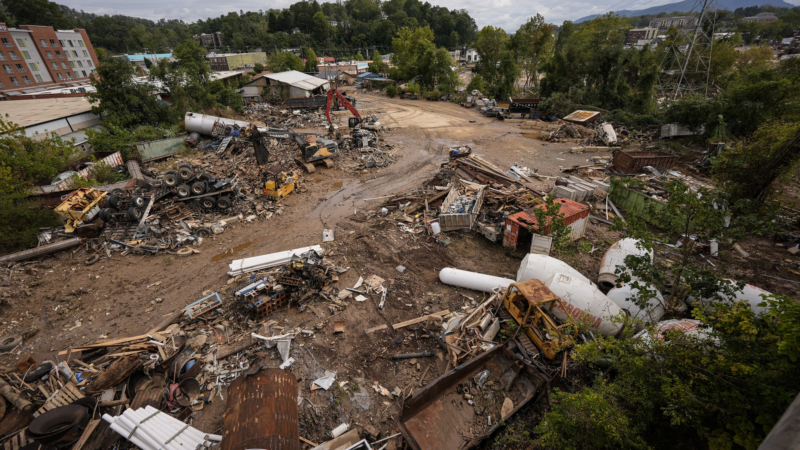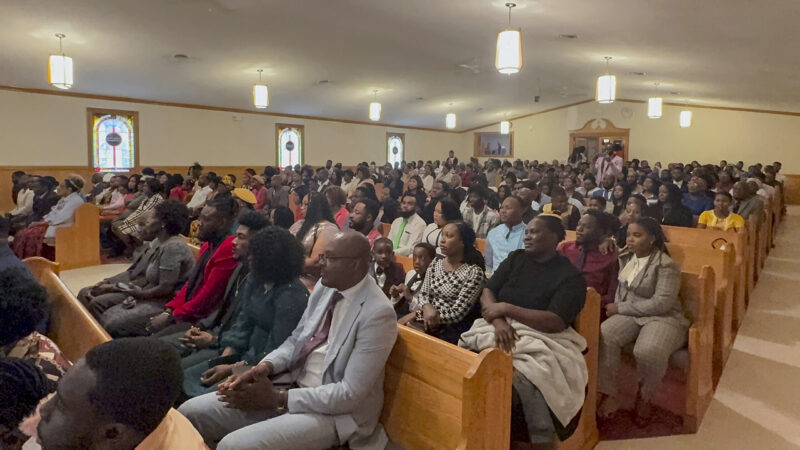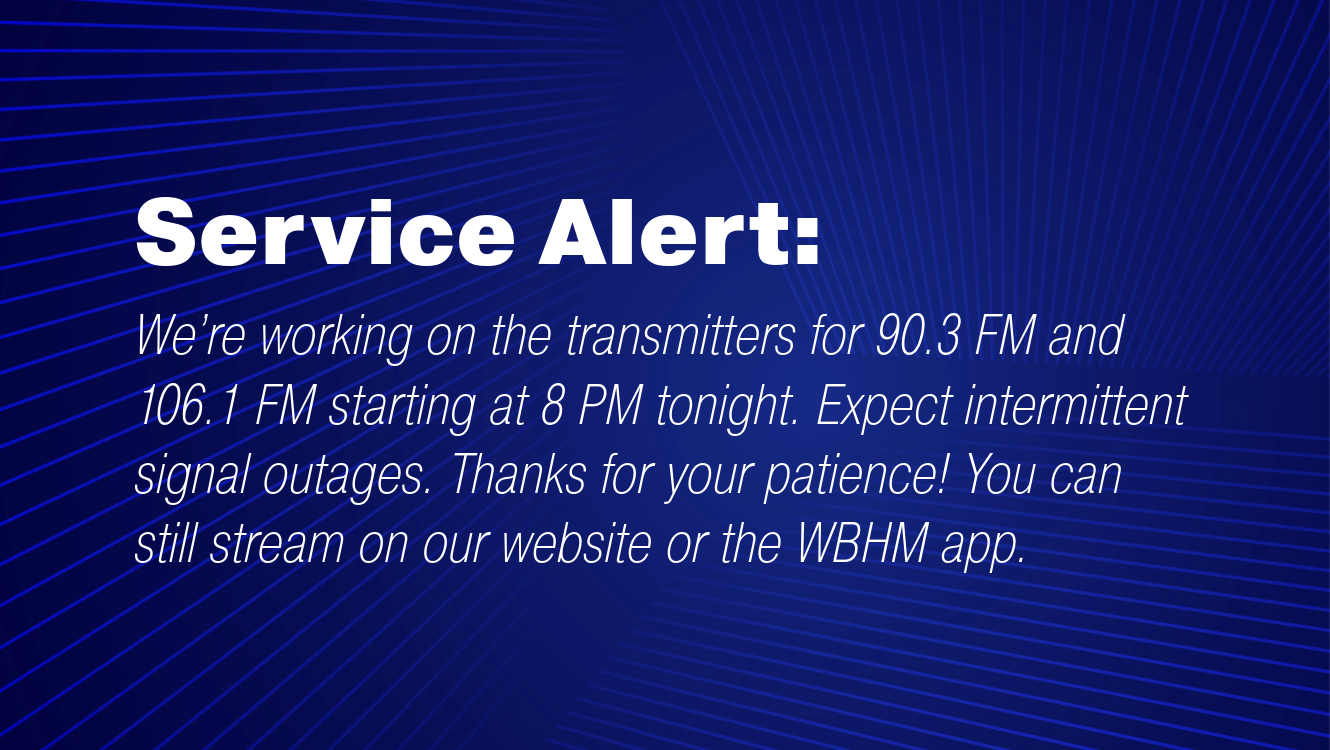1 year after Hamas attacked Israel, the conflict grows more dangerous than ever
This story is a part of an NPR series reflecting on Oct. 7, a year of war and how it has changed life across Israel, the Gaza Strip, the region and the world.
Thousands breached a border fence. Others arrived in speedboats. Some even came by paraglider in a dawn attack by Hamas fighters a year ago that caught Israel by surprise, leaving 1,200 people dead and another 250 as hostages. It also set in motion events that now threaten to turn Israel’s long-running conflict with Iran’s proxies into a direct and dangerous war with Tehran.
Saturday, Oct. 7, 2023, marked the deadliest day in the history of modern Israel, triggering a devastating attack on Palestinians. The result has been a humanitarian catastrophe for Gaza. Beginning in the days after the Hamas attack, Israeli warplanes began punishing airstrikes inside the narrow strip of Palestinian territory that also lies adjacent to Egypt and the Mediterranean Sea. By the end of the month, Israeli forces had launched a full-scale ground invasion of Gaza.
At the one-year mark in the Israel-Hamas war, here are four things that are key to where things stand today.
Netanyahu feels pressure to negotiate for hostages
In the aftermath of the Hamas attack, as Israelis mourned those killed, they also feared for the safety of the hostages. A central plaza in downtown Tel Aviv, unofficially dubbed Hostages Square, was quickly transformed into a gathering place for the families, friends and supporters of the captives. “Bring them home now!” emerged as a potent rallying cry, and posters showing the faces and names of the hostages became ubiquitous. Many Israelis began wearing special necklaces, bracelets and T-shirts to show their support for the captives. Daily vigils in Hostages Square drew large crowds.
Israeli Prime Minister Benjamin Netanyahu — already weathering intense criticism for intelligence failures in the lead-up to the surprise attack — came under intense pressure to halt the fighting in Gaza and secure the release of the hostages.
Although Israel and Hamas managed a brief cease-fire in November that allowed for the exchange of more than 100 hostages for nearly 250 Palestinian prisoners, the truce lasted just a week. Hamas did unilaterally release four hostages, and eight others were rescued by Israeli forces. Israel’s military also recovered the bodies of several hostages.

The fate of the remaining captives in Gaza has remained an open wound for many Israelis. Netanyahu’s office believes that of the 101 hostages still unaccounted for in Gaza, about a third are likely dead.
The hostages question continues to shape Israel’s public response to the conflict.
Israel is blamed for Gaza’s growing humanitarian crisis
Since the start of Israel’s military response, the country’s attacks have killed at least 41,000 Palestinians in Gaza, including 16,500 children, according to Gaza’s Health Ministry. Another 95,000 people have been injured, the ministry says.
Israel’s military began its assault on Hamas in the north of Gaza, and as Palestinian civilians sought to escape the fighting, most of them fled southward, displacing them from their homes and cutting them off from critical infrastructure needed for daily survival.
Recent data from the U.N. Office for the Coordination of Humanitarian Affairs, the World Health Organization and Palestinian officials in Gaza indicate the attacks have damaged or destroyed more than half of Gaza’s homes, 80% of its commercial facilities and 85% of the territory’s schools.
U.N. Secretary-General António Guterres has called the humanitarian situation in Gaza a “moral stain on us all,” and the aid group Refugees International has said that Israel’s military response “has wrought disproportionate death and suffering among civilians in Gaza, generating famine-like conditions while obstructing and undermining the humanitarian response.”
Khan Younis, Gaza’s second-largest city, which Israeli authorities considered to be a Hamas stronghold, experienced some of the most intense bombardment of the conflict.

In the first few months of fighting, Rafah, near the border with Egypt in southern Gaza, was designated as a “safe zone” by the Israeli military — meant as a place where civilians could shelter and get access to desperately needed international humanitarian aid. Even so, Israel continued to carry out airstrikes on Rafah, some targeted at Hamas fighters or facilities, while others aimed to free Israeli hostages, according to the Israeli military. Some of those airstrikes hit homes, killing and injuring dozens of civilians, and others destroyed food distribution sites. More than half of Gaza’s prewar population of 2.2 million was believed to be sheltering in Rafah. In May, Israel issued evacuation orders for the city and launched an offensive that sealed the border with Egypt, which until then was one of the main entry points for humanitarian aid.
Food, drinking water and materials for temporary shelters are in short supply and are being carried in by trucks operated by international relief organizations. People in Gaza are down to one meal every other day, and an estimated 50,000 children between the ages of 6 months and 5 years are in urgent need of treatment for malnutrition.
U.S. efforts to speed aid to Gaza have also floundered. A special $230 million temporary floating pier known as the Joint Logistics Over-the-Shore system (JLOTS) operated only intermittently as damage from high winds and rough seas in the eastern Mediterranean repeatedly rendered it inoperable.
Diplomacy has been mostly a failure
Besides the brief cease-fire to facilitate a hostages-for-prisoners swap, repeated rounds of peace talks — some mediated by Qatar — have failed to make much progress. Deep-seated animosities and the fragmented nature of the Palestinian leadership have played a part in preventing any lasting peace deal.
Meanwhile, the U.S. has tried to walk a fine line between diplomatic and military support for its long-term ally, Israel, and a desire to mitigate the suffering in Gaza while trying to contain a wider war that increasingly has dragged Iran and Israel into direct conflict and could engulf the rest of the Middle East.
For the moment, cease-fire talks that at times sparked optimism have fallen silent.
In late September, Secretary of State Antony Blinken summed up the U.S. position, saying, “Israel has the right to defend itself against terrorism. The way it does so matters.”
Meanwhile, public opinion in the U.S. has been split largely along partisan lines, with conservatives showing support for Israel, but some people, younger and more liberal, turning out for pro-Palestinian rallies on college campuses.
Among Democrats, more than half say that Israel bears “a lot” of responsibility for the continuation of the war in Gaza, while only about 4 in 10 Republicans do, according to a Pearson Institute/AP-NORC poll published last week.
That political dichotomy could influence the outcome of a likely tight U.S. presidential race, with some Democrats suggesting that Netanyahu is ignoring the Biden administration’s peace entreaties in an effort to tip the election toward former President Donald Trump. Meanwhile, voters in key battleground states give Trump higher marks than his opponent, Vice President Harris, on foreign policy matters, according to a recent poll by the New York-based Institute for Global Affairs.
Targeting Hezbollah and Lebanon could start a wider and more dangerous war
From the opening days of the conflict in Gaza, the Biden administration warned against allowing the Hamas attack to morph into a war that could bring in Hezbollah — the Lebanon-based, Iran-backed militant group — as a primary combatant and could eventually lead to a direct conflict with Tehran.
But increasingly in recent weeks, that’s exactly what seems to be happening.
On Oct. 8, 2023, Hezbollah began launching rockets against Israel in support of the Palestinian militants fighting in Gaza. Israel hit back, and for months, low-level conflict simmered along the Lebanon-Israel border. Iran, Hezbollah’s main backer, mostly stayed out of the conflict. But an Israeli attack in April against an Iranian diplomatic base in Syria that killed several of Iran’s Islamic Revolutionary Guard Corps officers changed the dynamic. Less than two weeks later, Iran retaliated with a large-scale drone and missile strike on Israel. The attack, heavily telegraphed by Tehran in an apparent effort to contain the fallout, was easily repulsed by Israeli air defenses, assisted by the United States.
Fast-forward to last month: In an operation credited to Mossad, Israel’s intelligence agency, in synchronized attacks over two days, electronic pagers belonging to members of Hezbollah suddenly exploded across Lebanon, killing more than a dozen people — including two children — and wounding thousands more, according to Lebanese health authorities.
Soon after, Israel launched hundreds of airstrikes against southern Lebanon that it said were aimed at Hezbollah targets. One that hit a residential building in downtown Beirut killed a top Hezbollah commander.

As Israeli airstrikes continued days later, multiple residential buildings in southern Beirut were demolished. On Sept. 27, Israel announced that Hezbollah leader Hassan Nasrallah, who led the militant group for more than three decades, was killed in one of the strikes. Hezbollah later confirmed his death.
Israel also hit ports and power stations in Yemen operated by another Iran-backed group, the Houthis.
The United Nations says about 1 million Lebanese have fled their homes amid the Israeli airstrikes. Israeli authorities say about 63,000 Israelis remain displaced from the border area with Lebanon due to Hezbollah rocket fire.
On Oct. 1, Israel opened a ground offensive in southern Lebanon, a move that hearkened back to a similar 1982 invasion of the country’s south by Israeli forces, which led to an 18-year occupation and to a monthlong war that Israel fought against Hezbollah in 2006. Less than 24 hours later, Iran launched a massive ballistic missile attack on Israel. The country’s extensive defenses — bolstered by two U.S. destroyers deployed in the region — intercepted most of the Iranian missiles. However, Israeli officials acknowledge that some of the Iranian missiles did hit an air base.
NPR’s Daniel Estrin in Tel Aviv, Israel, contributed to this report.
Fact checking falsehoods about FEMA funding and Hurricane Helene
Rumors, misinformation and lies about the federal government’s response to Hurricane Helene have run rampant since the storm made landfall, especially around FEMA funding.
Supreme Court ducks cases involving everything from abortion to Elon Musk
The justices also left in place a Michigan state constitutional amendment that barred the use of public funds for private schools.
Despite mixed reviews, ‘Joker 2’ is on track to be one of the biggest comic-book-film flops
Many film critics and comic book fans say they felt the sequel felt short of their expectations. Others argue that was the whole point all along.
‘Will & Harper’ navigate transition and friendship in a cross-country road trip
Will Ferrell and his longtime friend and former SNL writing partner Harper Steele traveled from New York to California, talking along the way about Steele coming out as a trans woman.
For small cities across Alabama with Haitian populations, Springfield is a cautionary tale
Amid mounting tension, a bipartisan group of local religious leaders, law enforcement officials and residents across Alabama sees the fallout in Springfield as a cautionary tale. They've been taking steps to help integrate the state's Haitian population in the small cities where they live.
GPB morning headlines for October 7, 2024
Business owners and consumers are adjusting to a new state law that governs the rules and access to hemp. Today is the last day to register to vote in the November election in Georgia. A study by the University of Georgia, finds consumers may see fewer vegetables from California and more from the Peach State.





